Monasteries in Bhutan, nestled among breathtaking landscapes, offer a profound journey into the country’s rich cultural and spiritual heritage. These sacred sites, or Dzongs and Lhakhangs, are more than just places of worship; they are also architectural marvels that provide a deep insight into Bhutan’s Buddhist traditions. From the iconic Taktsang Monastery perched on a cliffside to the tranquil Punakha Dzong, each monastery has its own unique story and significance. This article explores ten of the most revered monasteries in Bhutan, offering a glimpse into their spiritual and cultural importance.
List Of Monasteries In Bhutan
Bhutan is a spiritual haven with many monasteries spread across its rugged landscapes. Here are 10 significant monasteries in Bhutan:
1. Taktsang Monastery
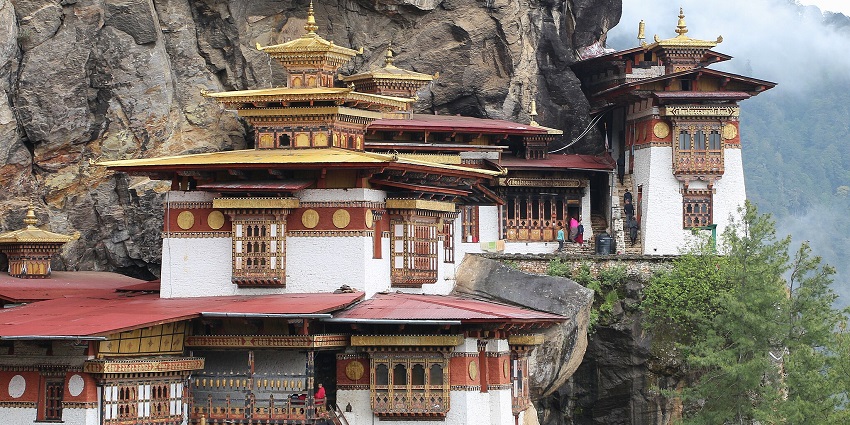
Photo: Bernard Gagnon / Wikimedia Commons
Taktsang Monastery, or Tiger’s Nest, is a renowned Buddhist temple perched on a cliff in Bhutan’s Paro Valley. Constructed in 1692, it surrounds the sacred cave where the revered Guru Padmasambhava is said to have meditated for three years, three months, three weeks, three days, and three hours. Reaching the monastery is a spiritual and physical journey, offering breathtaking views. For those seeking a deep connection to Bhutan’s rich spiritual heritage, Taktsang Monastery is a must-visit destination.
Location: Paro Valley, Bhutan
Timings: 8 AM – 1 PM, and 2 PM – 5 PM (visiting hours may vary)
Entry Fee: BTN 2,000 / INR 2,000
Suggested Read: Exploring Taktsang Monastery
2. Punakha Dzong, Punakha
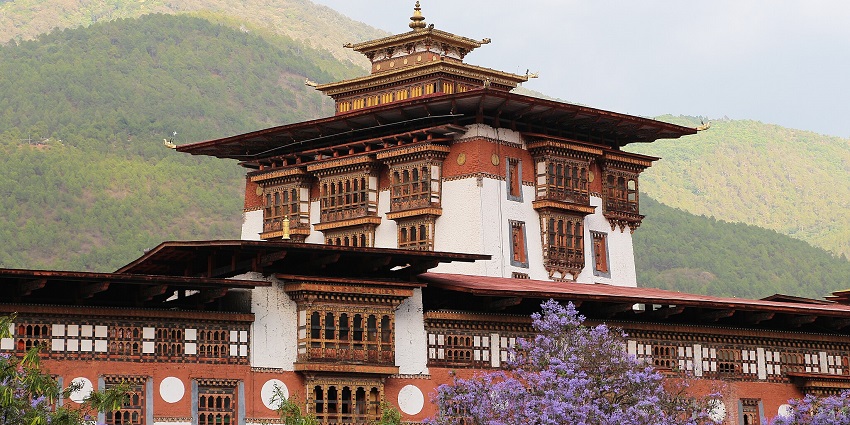
Photo: Bernard Gagnon / Wikimedia Commonst
Punakha Dzong, also known as the “Palace of Great Happiness,” is one of Bhutan’s most significant and beautiful monasteries. Located at the confluence of the Pho Chhu and Mo Chhu rivers, this majestic dzong is an architectural masterpiece that played a pivotal role in Bhutan’s history. The dzong is the site of the annual Punakha Tshechu, a festival that celebrates Bhutanese culture and religion. The serene surroundings and the dzong’s historical importance make it one of the most famous monasteries in Bhutan.
Location: Punakha Valley, Bhutan
Timings: 9 AM – 5 PM
Entry Fee: BTN 800 / INR 800
3. Gangtey Monastery, Phobjikha Valley
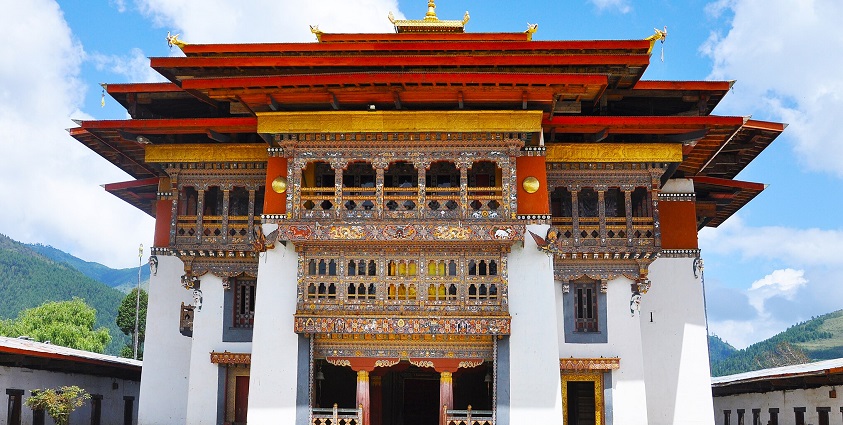
Photo: Prof Ranga Sai / Wikimedia Commons
Gangtey Monastery, also known as Gangtey Gonpa, is a significant Nyingma monastery located in the picturesque Phobjikha Valley. Founded in the 17th century by Pema Lingpa’s descendants, the monastery is surrounded by the valley, the winter home to the endangered black-necked cranes. The annual Black-Necked Crane Festival, held at the monastery, is a major event that attracts visitors to celebrate the arrival of these graceful birds. Gangtey Monastery offers a unique combination of spiritual, cultural, and natural experiences, making it one of the most popular monasteries in Bhutan.
Location: Phobjikha Valley, Bhutan
Timings: 9 AM – 5 PM
Entry Fee: BTN 400 / INR 400
Suggested Read: Exploring Karbandi Monastery
4. Tango Monastery, Thimphu
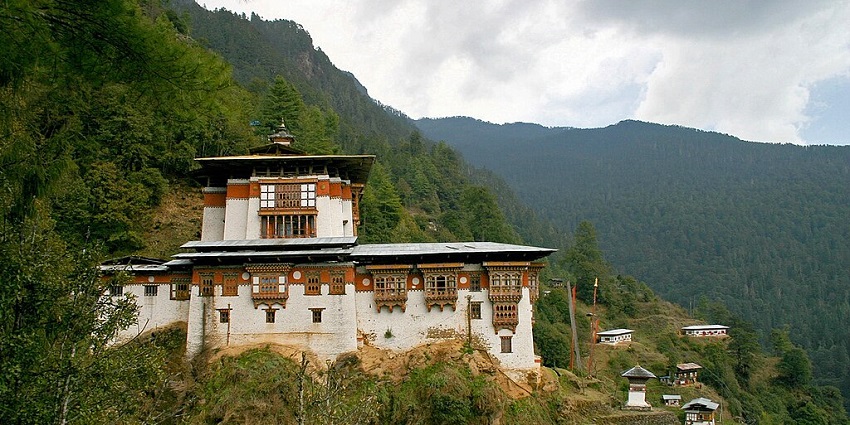
Photo: Jean-Marie Hullot / Wikimedia Commons
Tango Monastery, located north of Thimphu, is one of Bhutan’s most important religious institutions, serving as a Buddhist college where monks undergo rigorous training. The monastery was founded in the 12th century and later rebuilt by Shabdrung Ngawang Namgyal in the 17th century. Known for its serene atmosphere and beautiful architecture, Tango Monastery is a popular pilgrimage site and a place for meditation and spiritual reflection. This site is considered one of the holy monasteries in Bhutan.
Location: Near Thimphu, Bhutan
Timings: 8 AM – 5 PM
Entry Fee: BTN 400 / INR 400
5. Cheri Monastery, Thimphu
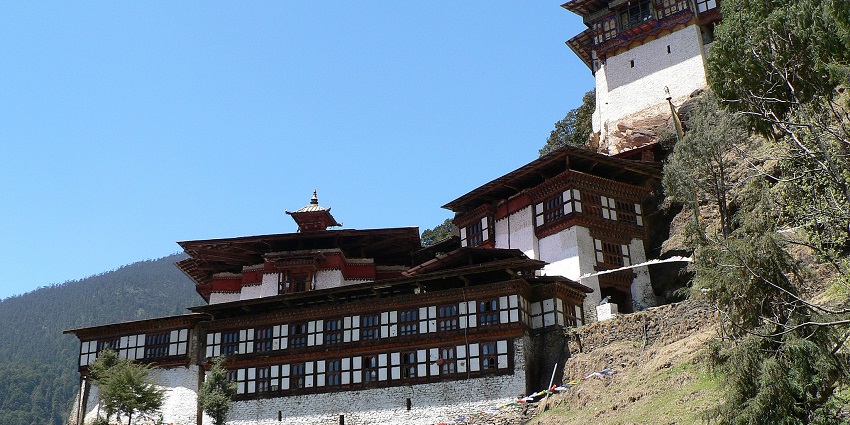
Photo: Stephen Shephard / Wikimedia Commons
Cheri Monastery, also known as Chagrin Dorjeden, is located north of Thimphu and is one of the most significant monasteries in Bhutan. Here, Shabdrung Ngawang Namgyal, the unifier of Bhutan, established the first monastic body in 1620. The monastery is known for its serene and secluded location, making it an ideal place for meditation and retreat. The hike to Cheri Monastery, along with the tranquil environment, offers a peaceful experience, making it one of the important monasteries in Bhutan.
Location: Thimphu, Bhutan / 30 minutes from the city
Timings: 9 AM – 5 PM
Entry Fee: BTN 400 / INR 400
Suggested Read: Bhutan Picnic Places For An Unforgettable Vacation
6. Kurjey Lhakhang, Bumthang
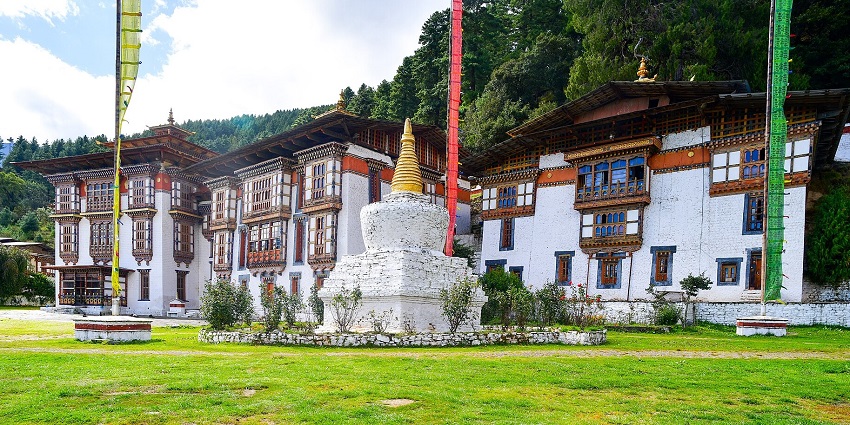
Photo: Christopher J. Fynn / Wikimedia Commons/a>
Kurjey Lhakhang, a sacred Buddhist monastery nestled within the picturesque Bumthang Valley, derives its name from the body imprint (kurjey) of Guru Rinpoche, believed to be embedded in a rock within its oldest temple. The complex comprises three temples, each showcasing distinct architectural styles that span various eras of Bhutanese history. Kurjey Lhakhang is also the venue for the annual Kurjey Tshechu festival, a significant religious event that draws numerous pilgrims. The monastery’s tranquil ambience and profound spiritual significance make it an essential pilgrimage site for visitors to Bhutan.
Location: Bumthang Valley, Bhutan
Timings: 9 AM – 5 PM
Entry Fee: BTN 400 / INR 400
7. Jambay Lhakhang, Bumthang
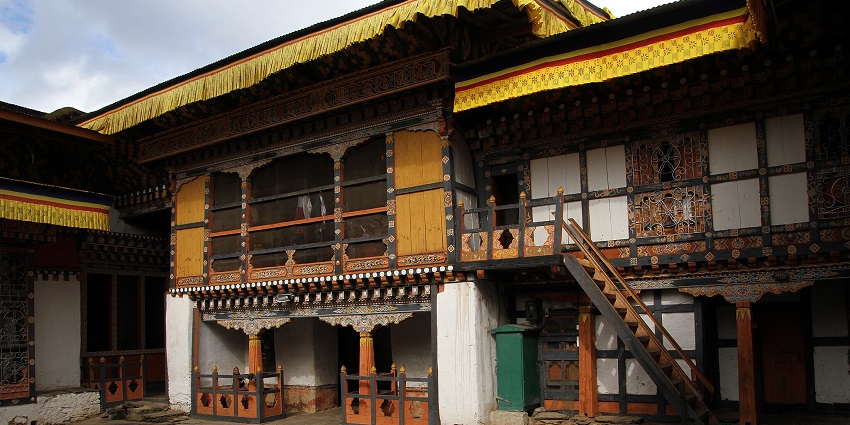
Photo: Gerd Eichmann / Wikimedia Commons
Jambay Lhakhang, a revered temple nestled within the serene Bumthang Valley, stands as one of Bhutan’s oldest and most sacred religious sites. Legend has it that Tibetan King Songtsen Gampo constructed this temple in the 7th century to subdue a malevolent spirit that hindered the propagation of Buddhism. Renowned for its annual Jambay Lhakhang Drup festival, a vibrant celebration featuring traditional mask dances and rituals, the temple’s ancient architecture and spiritual aura solidify its status as a cornerstone of Bhutan’s monastic landscape.
Location: Bumthang Valley, Bhutan
Timings: 9 AM – 5 PM
Entry Fee: BTN 400 / INR 400
Suggested Read: Phobjikha Valley In Bhutan
8. Rinpung Dzong, Paro
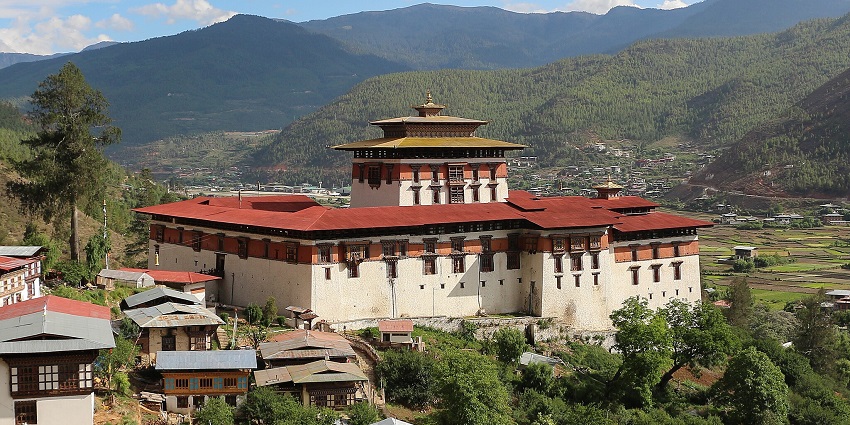
Photo: Bernard Gagnon / Wikimedia Commons
Rinpung Dzong, also known as Paro Dzong, is one of Bhutan’s most famous monasteries and fortresses. It is also known for its impressive architecture and strategic location overlooking the Paro Valley. The dzong houses both the monastic body and the district administration offices. It is also the venue for the Paro Tshechu, a popular annual festival that draws thousands of visitors. The dzong’s massive walls, traditional Bhutanese architecture, and scenic location make it a must-see attraction in Bhutan.
Location: Paro, Bhutan
Timings: 9 AM – 5 PM
Entry Fee: BTN 300 / INR 300
9. Tashichho Dzong, Thimphu
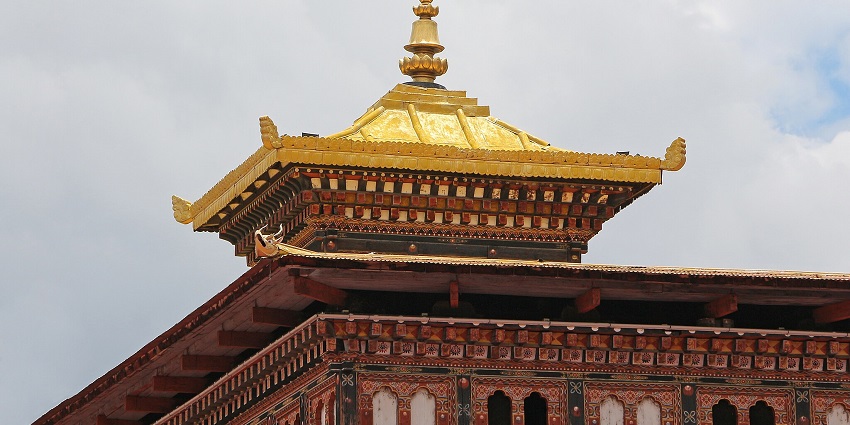
Photo: Bernard Gagnon / Wikimedia Commons
Tashichho Dzong, located in the capital city of Thimphu, is one of Bhutan’s most important monasteries and government buildings. It serves as the summer residence of the central monastic body and houses the throne room and offices of the king. The dzong is an architectural marvel with its grand courtyards, towering whitewashed walls, and golden roofs. It is also the site of the Thimphu Tshechu, one of Bhutan’s largest and most vibrant festivals. Tashichho Dzong is a must-visit for anyone interested in Bhutan’s unique blend of spirituality and governance.
Location: Thimphu, Bhutan
Timings: 9 AM – 5 PM
Entry Fee: BTN 300 / INR 300
Suggested Read: A Guide To Airports In Bhutan
10. Lhuentse Dzong, Lhuentse
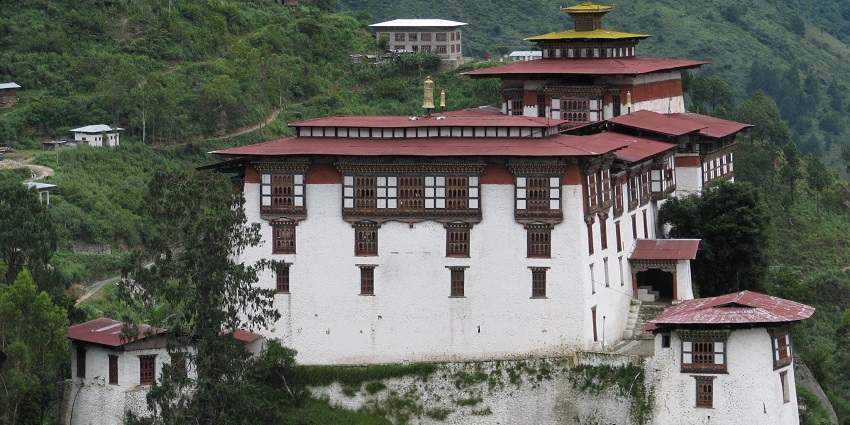
Photo: muddum27 / Wikimedia Commons
Lhuentse Dzong, also known as Lhundrup Rinchentse, is a majestic fortress located in the remote Lhuentse district of eastern Bhutan. The dzong is perched on a ridge overlooking the Kurichu River and is surrounded by rugged mountains. The dzong is not only a spiritual centre but also historically significant, as it is the ancestral home of Bhutan’s royal family. The annual Lhuentse Tshechu festival, held in the dzong’s courtyard, is a vibrant celebration of Bhutanese culture and spirituality. The dzong’s remote location adds to its mystique, offering visitors a unique and serene experience.
Location: Lhuentse District, Bhutan
Timings: 9 AM – 5 PM
Entry Fee: BTN 400 / INR 400
Exploring the monasteries in Bhutan offers a profound insight into the country’s spiritual and cultural essence. Each monastery, with its unique history and serene environment, provides a sanctuary for reflection and an opportunity to connect with Bhutan’s rich Buddhist heritage. For those planning a visit, TripXL ensures a well-organised and enriching experience, allowing visitors to fully immerse themselves in the tranquil beauty of Bhutan’s sacred sites.
Cover Photo: Sonamnidup / Wikimedia Commons


 WhatsApp
WhatsApp
 Twitter
Twitter









